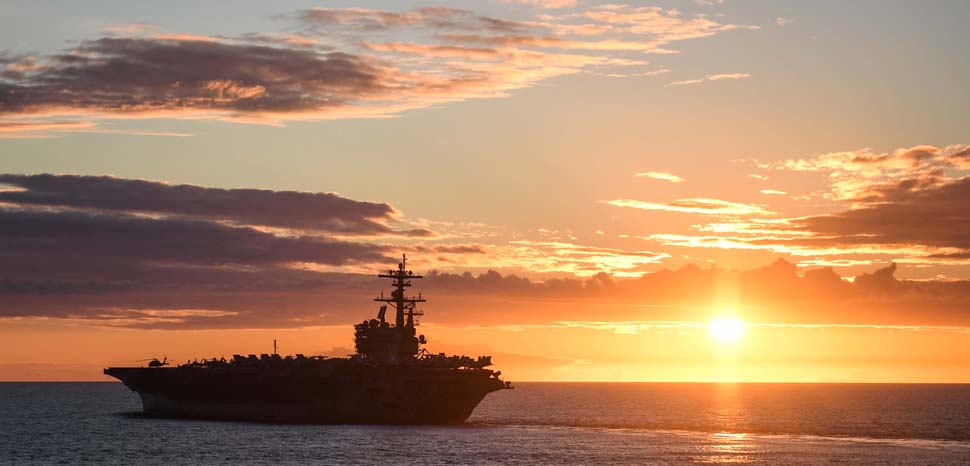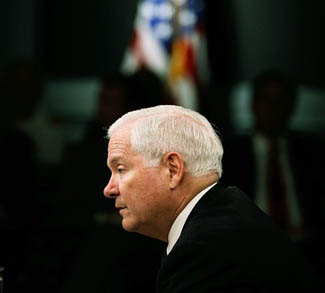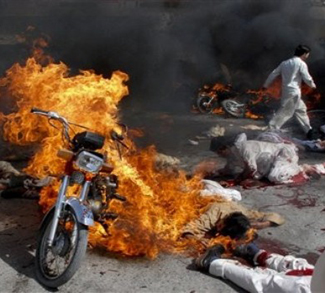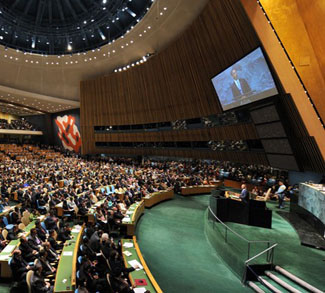After a few highly turbulent months, the Trump era will end on January 20, 2021. But the past four years have not only demonstrated that the United States is losing its ability to control the global system, but it has also made it clear that the domestic order is beginning to deteriorate back home. A much more painful period awaits America and the global system in the years ahead. America’s difficulties constitute its soft belly. These weaknesses could not only whet the appetite of the United States’ rivals, but also its allies and partners. This period has important similarities with the troubled decades between the two world wars. Therefore, it would be appropriate to question whether we are heading into a new ‘Thirty Year’s Crisis,’ with reference to Edward Hallett Carr.
Realism is on the rise
The most important proposition of realism is that the world system has an anarchic structure. No authority exists in this anarchic structure and power is the fundamental concept that determines the relations between states. Although the world system does not generally have a structure that determines the rules that all states must obey, forcing obedience and punishing those who resist, one state inevitably emerges that is relatively stronger than the others. The periods when such a state has the capacity to affect the entire globe in military, political, economic and cultural terms are referred to by the name of the state in question. For instance, Pax Romana denotes the ‘Roman Peace,’ when the Roman Empire was the dominant power in the world system and was able to impose its hegemony and set rules and norms. In such periods, realism is declared dead, or at least less important. Idealism prevails. This is at least so far as the dominant power of the system is concerned.
After the end of the Cold War, such a period was experienced due to the absence of a peer competitor for the United States, which emerged as the only hegemonic power and thus the victory of liberal democracy was declared. Furthermore, it was even claimed that history had ended – a world of eternal peace had emerged under the leadership of the United States. However, it turned out that it was not possible for eternal peace to reign. Wars continued in many parts of the world, states continued to be the main and indispensable actors of the international system, and national interests remained paramount for these states. The absence of a state capable of balancing US power led Washington to try and create artificial enemies. Although international terrorism helped to fill this role, it was not enough to achieve the desired momentum. As Huntington argued in his book Who Are We?, in which he examined the national identity of American society, a nation formed by immigrants like the United States always needs a common enemy or adversary. The Soviet Union fulfilled this need during the Cold War, but it took a long time for such a power to emerge in the post-Cold War period.
A great shift in global politics
Today, global politics is undergoing a great shift. This change is largely due to the rise of China (or the return of China, as some claim), globalization, interdependence between countries, and violent movements that transcend national borders. It is evident that the United States is now losing its influence in every aspect, particularly following the 2008 global financial crisis. As stated above, a hegemonic power which determines the rules and norms of the global system and forces other states to comply with these rules and norms is in fact the assurer of stability in such a system.
According to hegemonic stability theory, the existence of a hegemon acting as a central government in the international system is inevitable. The hegemonic state in question not only alleviates the tensions that arise from the anarchic nature of international relations, but also prevents the emergence of large-scale wars and supports the free trade. Naturally, it is the hegemon that benefits the most from liberal trade. It goes without saying that the globally recognized currency is also the currency issued by the hegemonic power. Based on this theory, the United States fulfilled all these functions after the World War II and in the post-Cold War period.
Demise of Pax Americana
The United States, as the center of production and the engine of technological development, promoted free trade and dictated rules and norms through institutions and organizations within the United Nations system. However, today the situation is changing, and the United States is beginning to lose its superiority in production and technology. The anxiety caused by this situation causes the United States to turn insular and take initiatives that undermine free trade. China, the emerging great power, on the other hand, is becoming a champion of free trade. This is normal because as China’s production capacity increases and it realizes advances in technology, so too does its military capacity and self-confidence on the global stage. Therefore, the top issue of the global agenda today is the emergence of China as a great power.
China’s rise
China seeks to sell its production overcapacity to the rest of the world without any limitations. In this context, it aims to reach global markets with its Belt and Road Initiative (BRI), which was launched in 2013. Finally, with the Regional Comprehensive Economic Partnership (RCEP) free trade agreement, signed by 10 ASEAN countries as well as five states in the Asia Pacific region, the path was opened for China to freely deliver its goods and services to all states in the region.
We can compare China’s rise, its desire to implement an ambitious project such as the BRI, and its advocacy of free trade, with the emergence of the United States first as a great power and then as a superpower. The United States emerged as a response to the colonialism in the Americas. However, following World War II and the Cold War, it became a prominent military power and an economic giant. The United States influenced the whole world culturally as well and aimed to be militarily present in every region of the world, able to deploy up to 11 aircraft carrier strike groups.
The United States was able to exert a high degree of control over the global economy after the World War II, thanks to the World Bank, International Monetary Fund (IMF) and the World Trade Organization (WTO). With the Marshall Plan, the United States aimed to improve the infrastructure and purchasing power of its allies and partners. It would not be wrong to suggest that China follows a similar course today. Similarly, China’s goal reflects the United States’ past desires. China uses the BRI and the Asian Infrastructure Investment Bank (AIIB) in this regard. Similar to the Marshall Plan, the BRI is being deployed as part of a larger strategy that brings together soft power, diplomacy, and infrastructure investments in pursuit of national interest.
China is taking over technology leadership from the United States. Its level reached in 5G technology today makes policymakers in the United States anxious. So much so that adoption of Chinese 5G technology has become a point of friction between the United States and its allies. China has not only grown economically but also made a great leap forward militarily. China, which started an aircraft carrier building program, today has two aircraft carriers, one of which was built by domestic shipyards. It is anticipated that China, which is building its third domestic aircraft carrier, aims to have at least four aircraft carriers in the near future. Although it expresses at every opportunity that it doesn’t pursue a hegemonic agenda, China has indicated that it aims to be an effective power all over the world by opening its first overseas military base in Djibouti. The situation within the scope of defense expenditures is much more striking. While China’s defense budget in 1989 was approximately USD 12 billion, it increased more than 20 times by 2019 to exceed USD 250 billion. As such, China has become the state with the highest defense spending in the world after the United States.
As early as the end of the 2000s, it had begun to emerge that the unipolar moment was over, and the United Stated had ceased to be the only power to determine the parameters of the world system. A new era now emerges, with all its symptoms. One of the leading actors in this new world order is undoubtedly China, and the new arena of competition is the Asia Pacific region. A significant part of the difficulties we experience today arise as a result of the efforts of states and international institutions to adapt to this new global reality.
A World War III?
It is possible to compare the current period to the period after the World War I. I think it is possible to refer to Edward Hallett Carr’s famous work and call the turbulence a new “Thirty Years’ Crisis.” Today, there is a state of optimism that nuclear deterrence renders an all-out war between major states impossible, just as World War I was once thought to be “the war that ended all wars.” Similar to that period, we see that not a single state is capable of establishing and sustaining global peace. That is why I strongly believe that the risk of a new global military conflict is just as serious now as it was in the lead-up to World War II.
The views expressed in this article are those of the authors alone and do not necessarily reflect those of Geopoliticalmonitor.com or any institutions with which the authors are associated.




